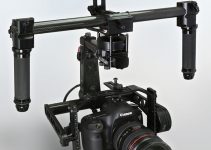Being a filmmaker often means being a one-man band. You go for your scouting, you do the planning, find talents, prepare the gear and finally shoot. And when you are shooting, who takes care of the audio?
That’s right, it’s still you! As filmmakers our attention often dwells more on the imagery, on the filmic part of the shoot, sometimes forgetting how much audio is important and how our audio gear could save a scene or an interview and make the difference between having the job done or instead throwing your head on the wall not knowing how to get out of difficult situation. Now, seasoned filmmaker Parker Walbeck comes to help us with a comparison between some of the most used shotgun mics in the market.
So let’s get to it. The test has been conducted in various different situations, trying to single out the best mic for each situation. The testing areas will be:
-
Test 1 – Large Room, Neutral sound
-
Test 2 – Isolation/Off-axis rejection
-
Test 3 – Moving subject
-
Test 4 – Wide shots
-
Test 5 – Reflective room (Echo)
The contenders range from the entry-level VideoMic Pro by Rode to the full bell and whistle Schoeps CMIT 5U. Let’s get a look at the results.
Test #1 – The neutral sound.
In this test, Parker started up with a test in a neutral location, a huge empty room, so to test a neutral sound. The NTG-3 and the CMIT-5U seem to have the biggest consensus, with the latter having a little bit more of a higher quality sound, although not much, and that is somehow to be expected.
The MKH-416 gives big feedback on bass, and that brings him last on the podium. This allows us to introduce an important factor, that is the kind of voice you’re going to record, meaning that not all mics will be good with all voices. If in fact, a mic like the MKH-416 has an excessive bass, it would be probably the best to avoid it if you’re recording a talent with plenty of bass to begin with.
Test #2 – Off-axis rejection.
This is one of the most important factors we usually check when evaluating a mic: how focused is it? How much noise will it pick up outside of the direction we’ve aimed to? Well, here the price tag on the CMIT shines and gets a reason to be.
Clearly, this mic with its supercardioid/lobe-shaped polar pattern yields precise directionality and keeps a leap in front of the others. That being said, most of the mics did well, with the Deity S-MIC2 staying a little bit behind seeming to pick up much more than the competitors.
Test #3 Moving subject.
In this test, the talent (Parker in this case) kept moving forward and backward just as often happens on set. This was a tough round and the NTG-3 won by a very little advantage. No doubt the good performance of all the booms is due to the setup. The positioning of the mics, in fact, has been done in order to anticipate the possible moving of the subject.
If you place your boom too close to talent, maybe just outside of the frame, you may increase the risk of losing him from the sweet spot for the microphone, if you anticipate that the subject may move a bit, it’s better to back off a little to increase the chance to keep him in focus.
It may come as a surprise (if you think about it it really is not) but the CMIT 5U had the worst performance. That is due to the fact that it’s extremely focused, so if you’re not skilled with the boom pole, you might get some mixed results. Keep in mind that it takes much less to get out of the spot with that.
Test #4 – The Wide shot.
Time to get outside again. On this occasion, the crew simulated a wide shot, when the sound guy is forced to keep the boom quite far away to stay out of the frame, in this case, 5ft away. The head trio stays the same. CMIT-5U, MKH-416, and NTG-3 gave the best results, while the VMP+ beats the S-MIC 2 that ended up last on the list picking up too much of the ambient with a very thin sound.
Test #5 – Echo.
Indoors again. A small room with reflective surface gives a nice set to test how the rivals will deal with echo and reverberation. This time, none of the challengers seems to give a good performance. It’s true, it is a very extreme situation, and in a room like that, it is expected not to have good audio. Still, the CMIT seems to have a little advantage over the others.
So, all in all, what shall we get from this testing? Indeed, the microphone with the higher price tag, the CMIT-5U justifies its price with the better score overall but carrying the cons of needing a little bit more expertise to use it at best. The best compromise if the CMIT is overkill to you (or if you simply can’t afford to invest 2K on a mic) is the NGT-3 which seems to be a good all-rounder, followed by the VMP+ that pulled out a significantly better performance then expected by its form factor. Let us know what you think!
[source: Parker Walbeck]
Order Links:
- Rode VideoMic Pro with Rycote Lyre Shockmount (B&H, Amazon)
- Rode NTG3 Precision RF-Biased Shotgun Microphone (B&H, Amazon)
- Sennheiser MKH-416 Short Shotgun Interference Tube Microphone (B&H, Amazon)
- Deity Microphones S-Mic 2 Shotgun Microphone (B&H, Amazon)
- Schoeps CMIT 5U Shotgun Microphone (B&H, Amazon)
Disclaimer: As an Amazon Associate partner and participant in B&H and Adorama Affiliate programmes, we earn a small comission from each purchase made through the affiliate links listed above at no additional cost to you.



